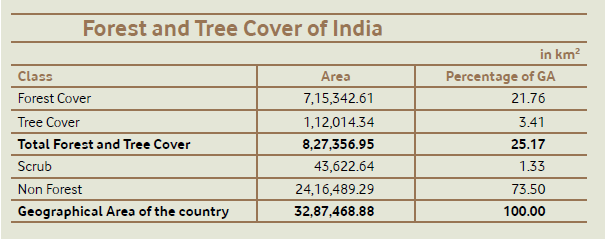7667766266
enquiry@shankarias.in
Mains Syllabus: GS I – Changes in in flora and fauna; GS III- Conservation, environmental pollution and degradation, environmental impact assessment.
Recently, Supreme Court came down heavily on Telangana government for the large-scale felling of trees across 100 acres of land felling of trees in the Kancha Gachibowli area abutting the University of Hyderabad.

Between November 2023 and June 2024, the Forest Survey of India recorded 2,03,544 forest fire incidents.

The Indian Express | Rapid development, shrinking green cover